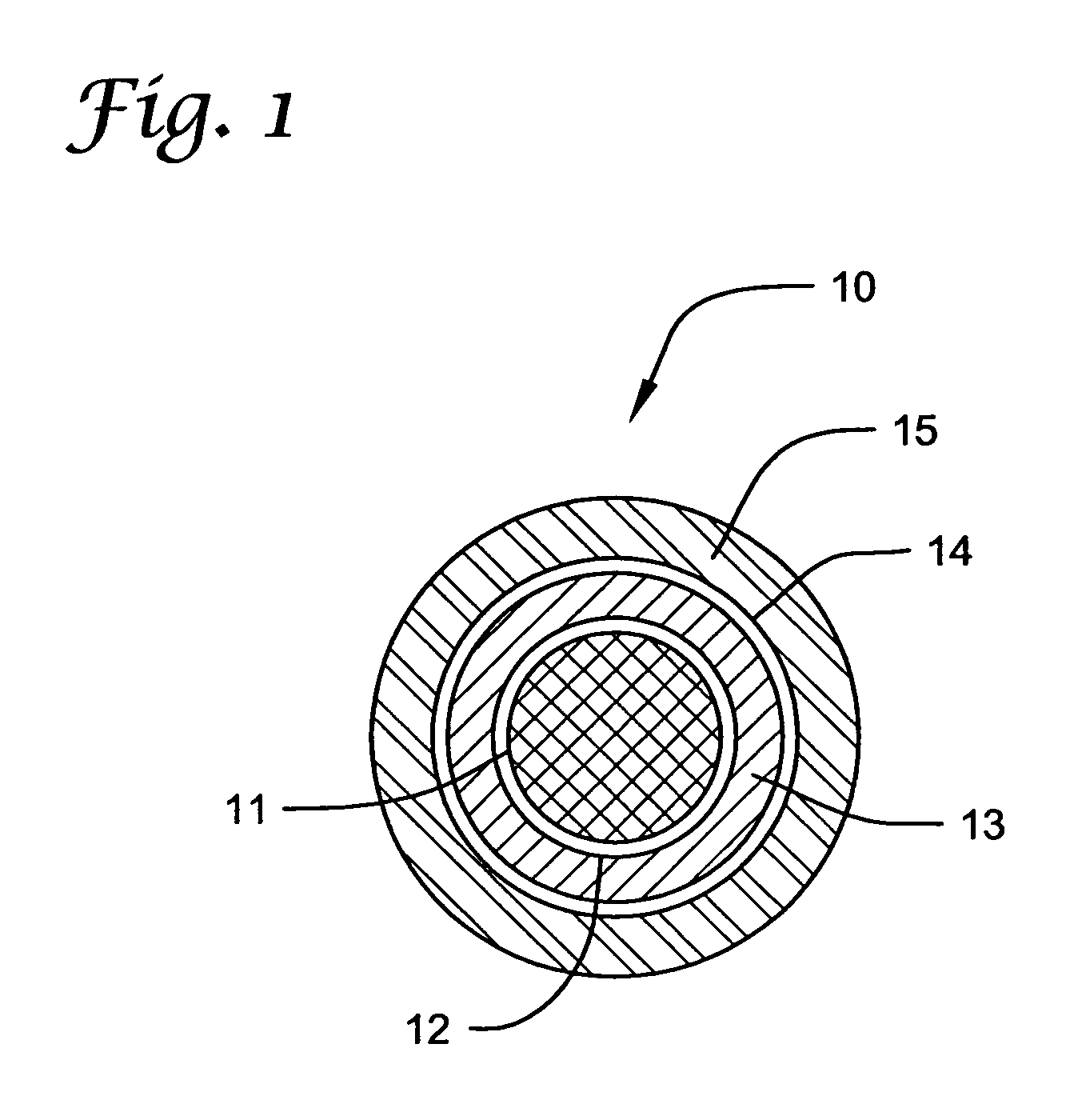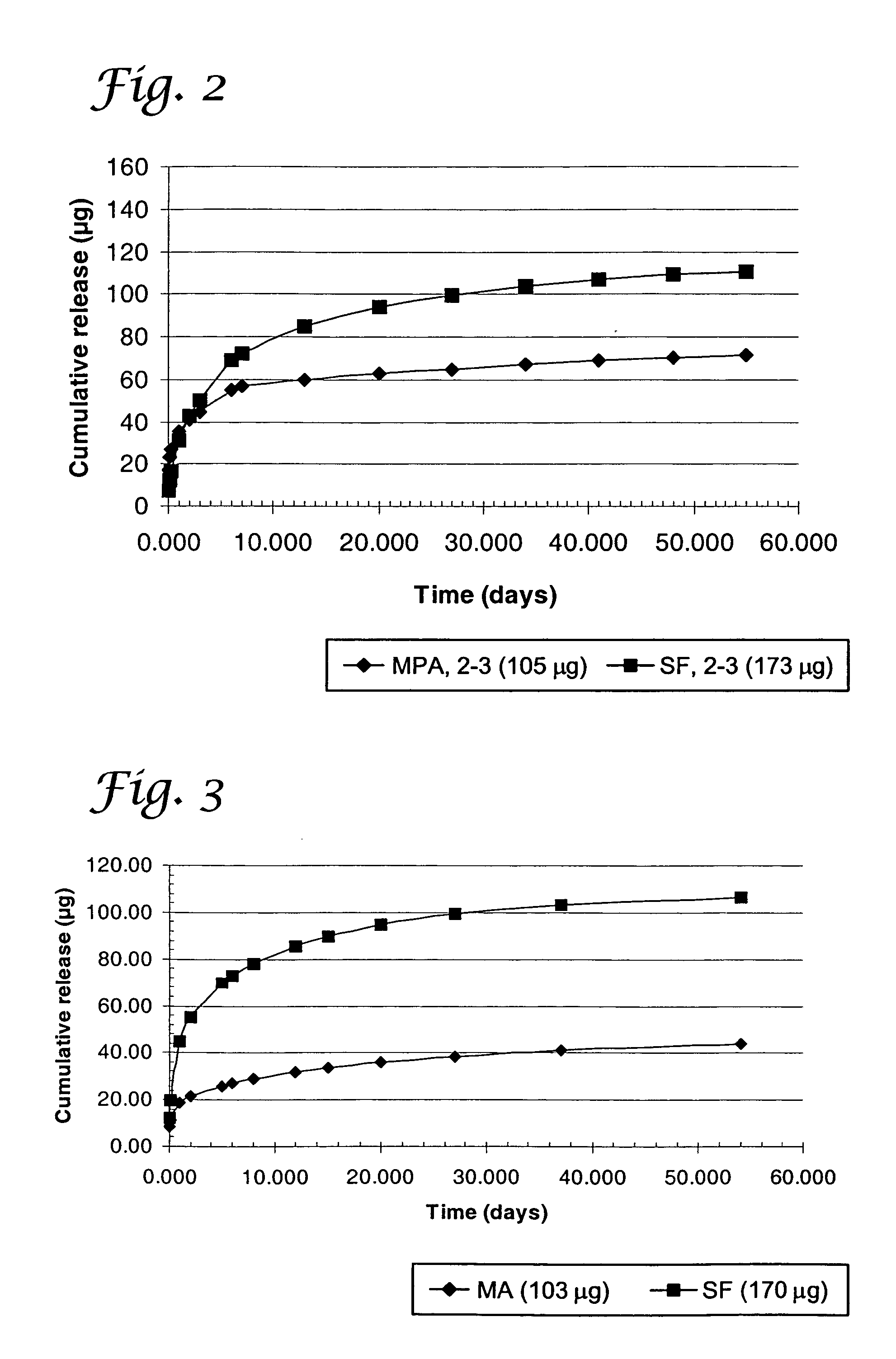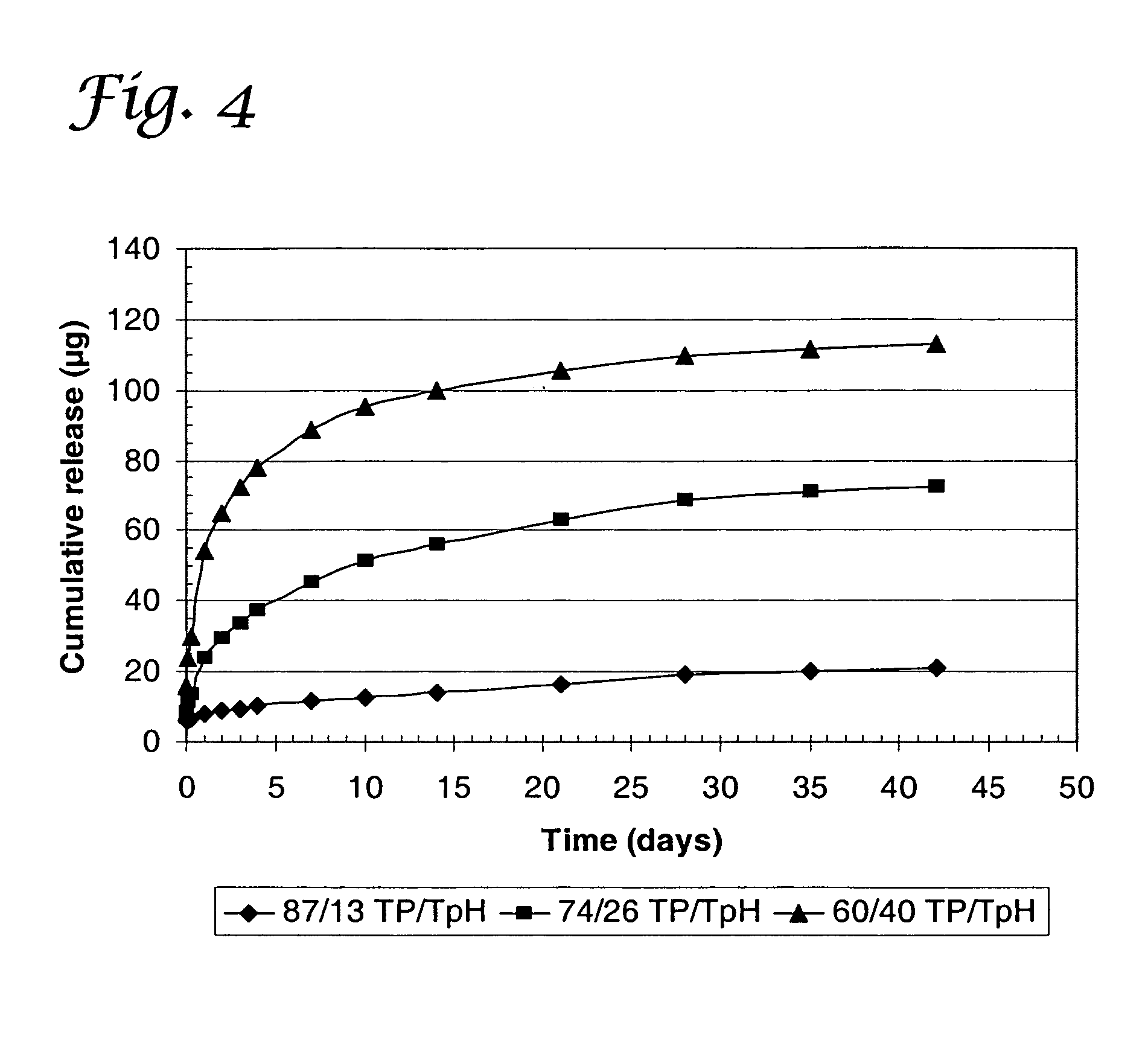Active agent delivery systems including a miscible polymer blend, medical devices, and methods
a technology of active agents and polymers, applied in the field of active agent delivery systems including miscible polymer blends, medical devices, and methods, can solve the problems of limited active agent range, structural failure, limitations of conventional active agent delivery systems, etc., and achieve the effects of not preventing permeation, increasing lag time, and slowing the rate of permeation
- Summary
- Abstract
- Description
- Claims
- Application Information
AI Technical Summary
Benefits of technology
Problems solved by technology
Method used
Image
Examples
example 1
Stainless steel coronary S7 stents (manufactured by Medtronic AVE) were ultrasonically cleaned with isopropanol (IPA) for 30 minutes and allowed to dry thoroughly. The stents were then sprayed with a 0.25% solution of TECOPLAST (TP) polyurethane (Thermedics Polymer) in THF as an initial primer. The stents were then heat-treated at 215-220° C. for 5-15 minutes to create better adhesion between metal and polymer interface. Next, each stent was sprayed with 1% solution of mycophenolic acid (Sigma-Aldrich) in TECOPLAST polyurethane (25 wt-% loading of active agent) using tetrahydrofuran (THF) as solvent. This represents the inner layer with a target coating of 400 micrograms (μg) + / −10% and a thickness of approximately 4 micrometers (μm). The stent was then vacuum-dried at 45° C. overnight and then weighed. After weighing, a thin coating of TECOPLAST polyurethane (1% solution in THF) was sprayed over the first or inner layer to form a barrier. This barrier formed the middle layer that ...
example 2
Using the same procedure as in Example 1, similar dual active agent-coated stents were fabricated except in this case the blend of the outer layer of TECOPLAST / PEVA was replaced with TECOPLAST / TECOPHILIC polyurethanes (Thermedics Polymer). The release of sulfasalazine from a blend of TECOPLAST (TP) and TECOPHILIC (TpH) polyurethanes for use as an outer layer is shown in FIG. 4. The release rate of sulfasalazine increased as the percentage of TECOPHILIC polyurethane in the blend increased.
example 3
Coated stents were fabricated as described in Example 1 and FIG. 1, except the design consisted of no middle barrier and its inner layer consisted of a blend of 80% TECOPLAST / 20% TECOTHANE 75D or just TECOPLAST alone, and the outer layer consisted of a blend of 70% TECOPLAST / 20% TECOTHANE 75D. This shows that polymer blends can be used to change the release characteristics of active agents. The release characteristics of this system are shown in FIG. 5. In FIG. 5, MA1-2 is the average cumulative release of mycophenolic acid from samples 1 and 2; SF1-2 is the average cumulative release of sulfasalazine from samples 1 and 2. For samples 1 and 2, the inner layer contains 30% of mycophenolic acid in TECOPLAST polyurethane and the outer layer contains 35% of sulfasalazine in a blend of 70% TECOPLAST and 30% of TECOTHANE 75D polyurethanes. Similarly, MA3-4 is the average cumulative release of mycophenolic acid from samples 3 and 4 and SF3-4 is the average cumulative release of sulfasalaz...
PUM
| Property | Measurement | Unit |
|---|---|---|
| Concentration | aaaaa | aaaaa |
| Miscibility | aaaaa | aaaaa |
| Solubility parameter | aaaaa | aaaaa |
Abstract
Description
Claims
Application Information
 Login to View More
Login to View More - R&D
- Intellectual Property
- Life Sciences
- Materials
- Tech Scout
- Unparalleled Data Quality
- Higher Quality Content
- 60% Fewer Hallucinations
Browse by: Latest US Patents, China's latest patents, Technical Efficacy Thesaurus, Application Domain, Technology Topic, Popular Technical Reports.
© 2025 PatSnap. All rights reserved.Legal|Privacy policy|Modern Slavery Act Transparency Statement|Sitemap|About US| Contact US: help@patsnap.com



